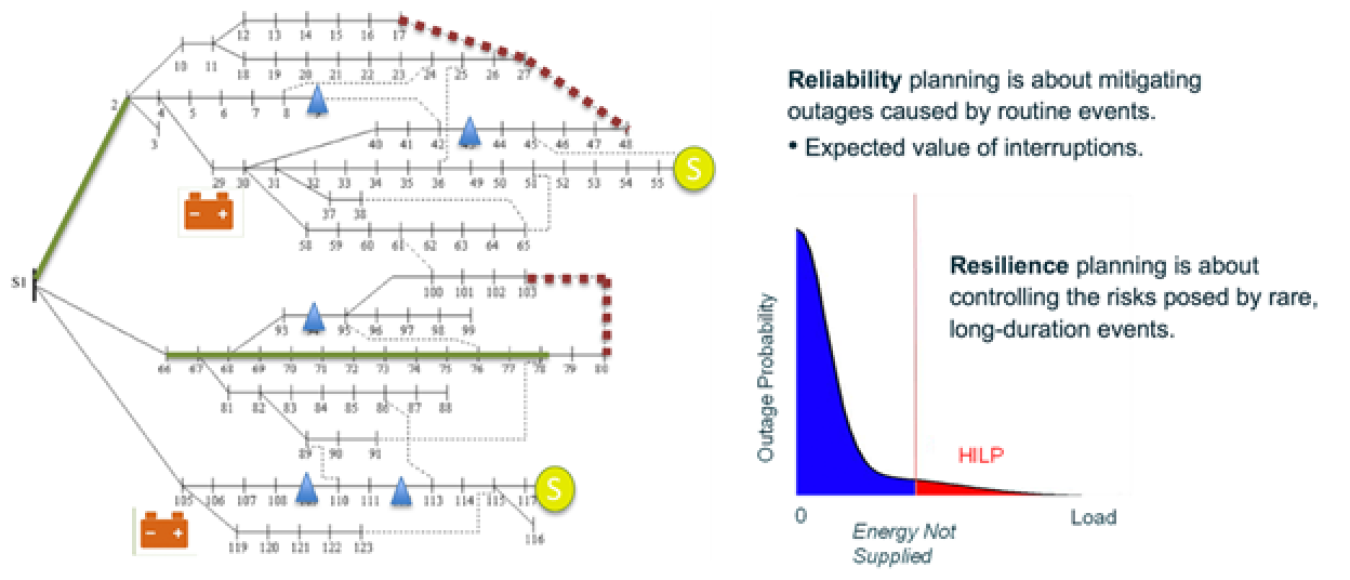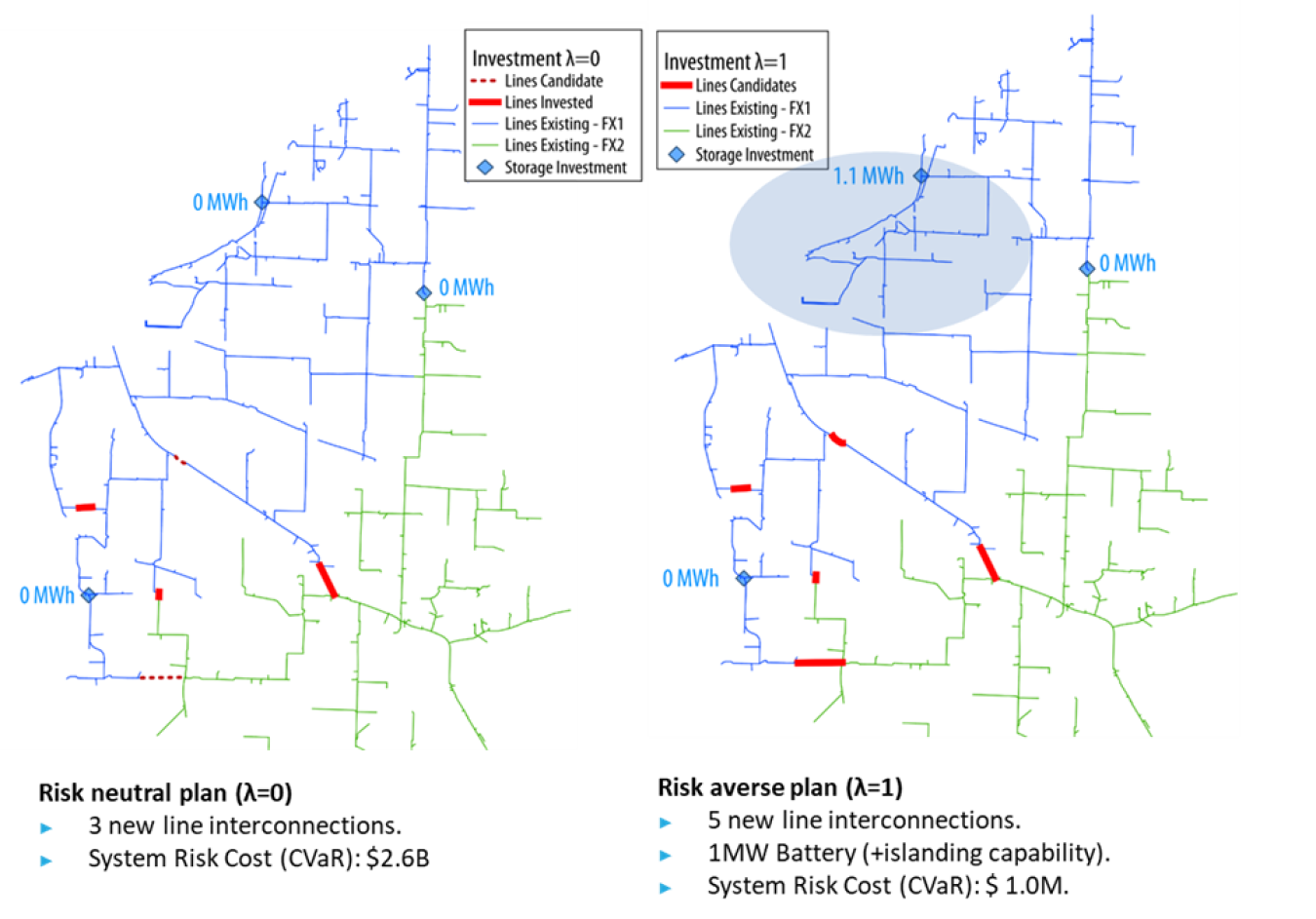Current electric utility investments to improve distribution system reliability are often based on analysis of historical performance.
December 18, 2023Modeling risk for a more resilient electric grid, Berkeley Lab model helps utilities plan for a more resilience
Current electric utility investments to improve distribution system reliability are often based on analysis of historical performance. The new Risk-controlled Expansion Planning with Distributed Resources (REPAIR) model, developed by the U.S. Department of Energy’s Berkeley Lab, uses a new, forward-looking approach to planning the expansion of large-scale distribution systems while accounting for the risk of extreme events. REPAIR incorporates both routine events and high-impact, low-probability events to inform decisions about investments that can enhance reliability and resilience.

Figure 1.
Even as electric utilities begin to think more about resilience in the face of more frequent and intense extreme weather, investment decisions such as undergrounding or protective hardware and software are still largely reliant on traditional approaches focused on routine historic failures and engineering electrical designs. As the power system continues to evolve amid a quickly changing climate, there is a need for methodologies that support utility investment decisions under reliability and resilience programs that capture forward-thinking risk mitigation. The REPAIR model, funded by the Office of Electricity, represents one such approach.
Recent research from Berkeley Lab used the REPAIR model to plan resilient investments in a feeder from the Reliability Program of Commonwealth Edison, which serves more than four million customers across northern Illinois. The team gathered more than 20 years of historical grid outage data in the Chicago area, including recent long-duration power distribution interruptions caused by summer storms in 2020. They combined this data with analysis of the risk associated with high-impact, low-probability events and the reliability related to routine failures and performed a forward-looking risk-aware optimization of investments. The results show that increasing feeder ties in combination with an investment of a 1-MW battery can dramatically reduce the risk of the system—a reduction of the system cost risk from $2.6 billion to $1 million—against the extreme event.

Figure 2.
As part of the National Community Solar Partnership, the REPAIR modeling tool was also used to better understand how to maximize the benefits of solar and other distributed energy resource (DER) projects for communities, as well as to the local grid. The tool was featured in President Biden's Earth Day 2022 Announcement, which mentioned the objective of using REPAIR for strategic deployment of DERs.
This blog was contributed by Miguel Heleno of the Lawrence Berkeley National Laboratory. He can be reached at [email protected].

